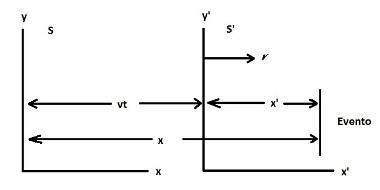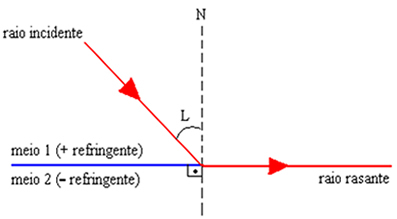In physics, the magnetic force (Fm), also called Lorentz Force, represents the attraction and/or repulsion force exerted by magnets or magnetic objects.
Formula
To calculate the intensity of the magnetic force, the following formula is used:
F = |q|. v. B. if you are
Where,
F: magnetic force
|q|: electric charge module
v: electric charge speed
B: magnetic field
if you are: angle between velocity vector and magnetic field vector
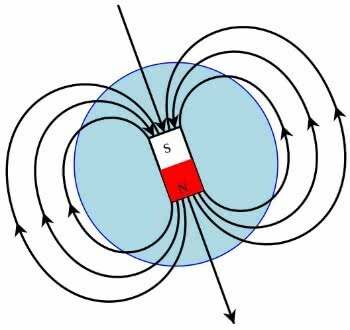 Magnetic field
Magnetic field
Note: In the international system (SI) the unit of measurement for magnetic force is Newton (N). The modulus of the electrical charge is Coulomb (C). The speed of the electrical charge is given in meters per second (m/s). The strength of the magnetic field is given in tesla (T).
Field and Magnetic Force
O magnetic field represents a space where there is a concentration of magnetism created around magnetic charges.
The so-called electromagnetic field is the place where there is a concentration of electrical and magnetic charges.
 The connection of an electric field with a magnetic field produces an electromagnetic field.
The connection of an electric field with a magnetic field produces an electromagnetic field.
In this case, the movement of electromagnetic charges occurs in the form of waves, the so-called "electromagnetic waves”.
Magnetic Force on Electric Charges
At electrical charges in motion they act within a magnetic field. Thus, when an electrical charge is moving within a magnetic field, it will have a magnetic force acting on it.
The magnetic force is proportional to the value of the charge (q), the magnitude of the magnetic field (B) and the magnitude of the speed (v) at which the charge moves.
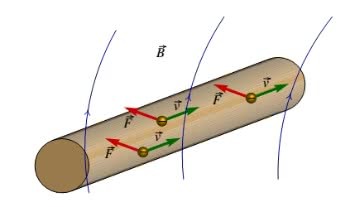 Representation of magnetic forces on electrical charges
Representation of magnetic forces on electrical charges
Read more about
- Magnetism
- Electromagnetism
- Lenz's Law
Rules
The magnetic force is a Vector greatness, therefore, it has a direction, a sense and a module. Remember that the magnetic force is perpendicular to the magnetic field (B) and the velocity (v) of the magnetic charge (q).
right hand rule
To understand the meaning of the magnetic force, the right hand rule is used, also called the “slap rule”.
With the right hand open, the thumb represents the direction of velocity (v) and the other fingers represent the direction of the magnetic field (B). The palm of the hand corresponds to the direction of the magnetic force (F).
To better understand this rule, see the figure below:
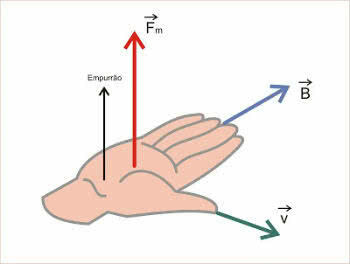
left hand rule
The left-hand rule, called “Fleming's left-hand rule,” is also used to find the sense of magnetic force.
The thumb represents the sense of magnetic force (F). The index finger represents the magnetic field (B), that is, the direction of the electric current. The middle finger indicates the speed direction (v).
For a better understanding, see the figure below:
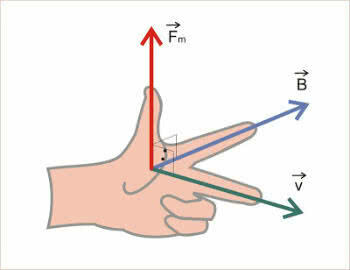
Entrance Exam Exercises with Feedback
1. (MED - ITAJUBÁ)
I. An electric charge subjected to a magnetic field is always acted on by a magnetic force.
II. An electric charge subjected to an electric field is always acted on by an electric force.
III. The magnetic force acting on an electrical charge moving within a magnetic field is always perpendicular to the charge's velocity.
Point out the correct option below:
a) Only I is correct.
b) Only II is correct.
c) Only III is correct.
d) II and III are correct.
e) All are correct.
Alternative
2. (PUC) An electron in a cathode ray tube is moving parallel to the tube axis at a velocity 107 m/s. Applying a 2T magnetic induction field, parallel to the tube axis, the magnetic force acting on the electron is:
a) 3.2. 10-12N
b) null
c) 1.6. 10-12 N
d) 1.6. 10-26 N
e) 3.2. 10-26 N
Alternative b
3. (UFU-MG) A charge q moving with velocity v immersed in a magnetic field B is subject to a magnetic force Fmag. If v is not parallel to B, mark the alternative that has the correct characteristics of the magnetic force Fmag.
a) The work performed by Fmag about q is null because Fmag is perpendicular to the plane formed by v and B .
b) The work performed by Fmag over q is proportional to v and B, since Fmag is perpendicular to v.
c) The value of Fmag does not depend on v, only on B; therefore Fmag does not do any work on q.
d) The value of Fmag is proportional to v and B, being parallel to v; therefore the work done by Fmag over q is proportional to v.
Alternative to
Also read about:
- Nikola Tesla
- Electric circuit
- Photoelectric effect


